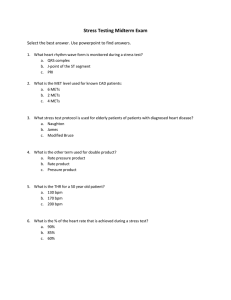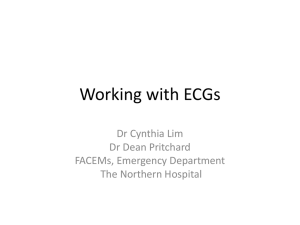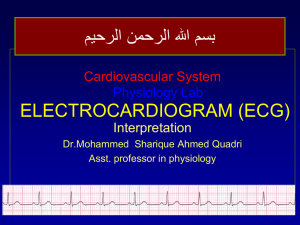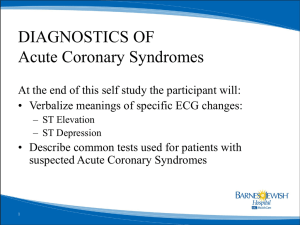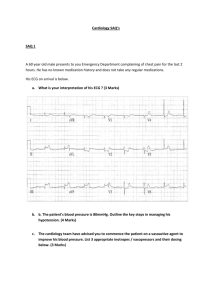Pericarditis and Myocarditis
advertisement
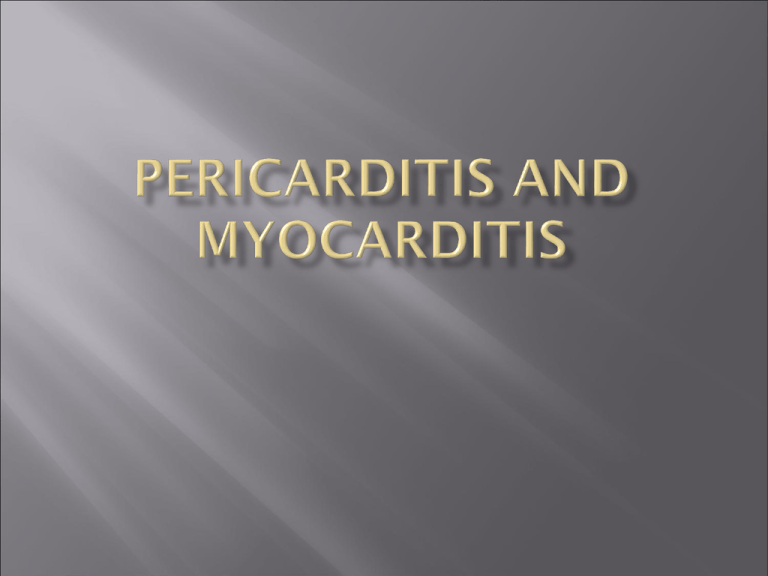
“ Inflammation of the pericardium” Chest pain Dry cough, fever , fatigue Pericardial rub ST elevation on ECG Cardiac tamponade CCF • • • • • • Infection -viral, bacterial Secondary to recent cardiac surgery Post MI IV Drug abuse Kidney failure Metatastic disease Restricts the heart – reduces operative chamber compliance Thickened pericardium isolates heart from normal respiratory swing, however respiratory fluctuations in pulmonary venous pressure still occurs Tamponade Bacterial – antibiotics Fungal – antifungal agents Hospitalisation Constictive Pericardetomy may be required ST elevation in any lead May be in all leads May not be anatomically grouped J-point notching can be presentpresent Fish hook • Look for notch at J-point – ST segment and J-point create a “fish hook” appearance Stage I everything is UP (i.e., ST elevation in almost all leads - see below) Stage II Transition ( i.e., "pseudonormalization"). Stage III Everything is DOWN (inverted T waves). Stage IV Normalization Inflammation of the heart muscle Generalised aches and pains fever SOB chest pain Increase in heart rate Viral – coxsackievirus B Bacteria – Staphyloccus aureus, borrelia burgdorferi Diptheria Parasites – trypanosoma cruzi Fungi Chemicals Medications Systemic diseases ECG – non specific changes Echo- enlarged heart Biopsy NB ECG can be normal REST Steroids – severe cases May need to manage electrolyte imbalances or complications of heart failure NB 10% of patients proceed to develop dilated cardiomyopathy


